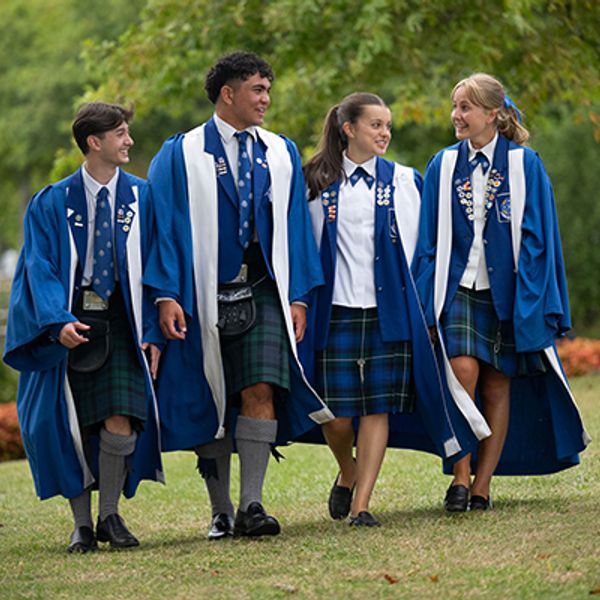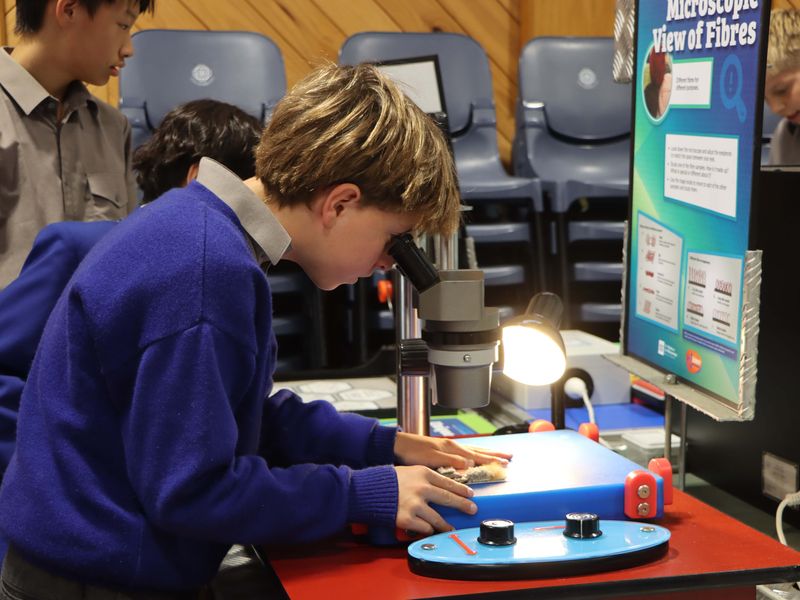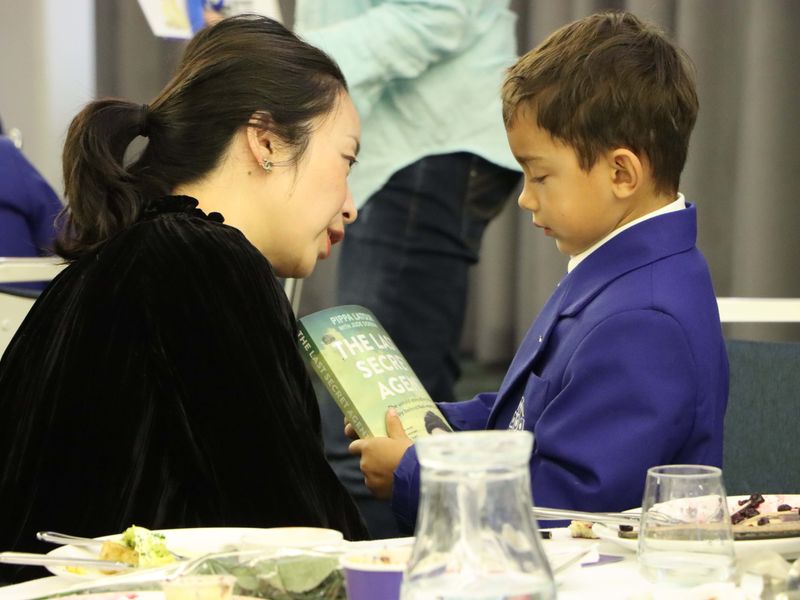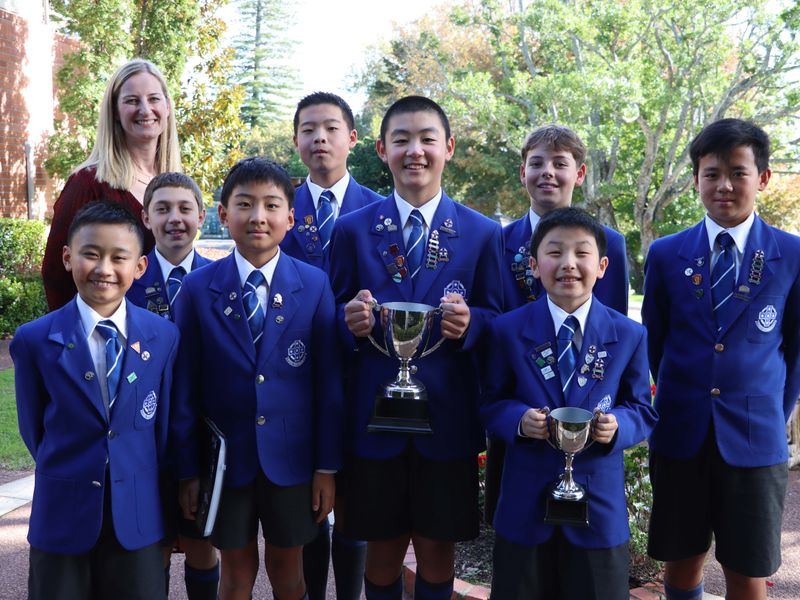
Celtic Day
Celtic Day
April 10, 2017 at 11:38 AM
Take the liver, kidneys, lungs and heart of a sheep and boil them.
Mince the result and mix with chopped onions, toasted oatmeal, salt, pepper and spices.
Take one properly cleaned sheep's stomach, yes, that was sheep’s stomach, and stuff with the prepared contents.
Sew up the stomach (leaving enough room for expansion to avoid a large, messy explosion) and boil.
Serve and eat.
Lovely.
Sort of.
Now serve to over 500 young boys!
(More about that later...)
Yes, it’s Celtic Day! Without doubt the most favoured day on the school calendar; a day universally acknowledged as ‘the best’ – the only day of the year when the entire timetable is suspended in favour of activities arranged around a Scottish theme, with both fun and learning in mind. This year’s Celtic Day certainly lived up to its reputation, providing tradition, formalities, humour - and a time-honoured taste of something that more than any other food, has an exceptionally bad reputation! More about that later…
In a term when rain was the norm, curtailing camps and outdoor events, and in a week when sadly great swathes of the country were under water after Cyclone Debbie unleashed her fury; Shore Road was blessed with a day of sunshine for our annual Scottish festivities.
The clans gathered, painted, ‘tartaned’ and full of expectation before Sam McLeod stepped forward to lead the haka; challenging onlookers and stirring the spirit for a day of action.
For the past 20 years, the College Pipes and Drums have led the parade but now our own Boys’ School Pipes and Drums share that honour. Under a blaze of sunshine, our older boys took their younger buddies under their wing and followed the bands, knowing plenty of fun lay ahead! The transition boys from the Preschool were also there to join in the fun.
Principal, Mr Peter Cassie began with a Scottish blessing, ‘May the roof above never fall in; may we below never fall out,’ before handing over to our student leaders to tell the story of our patron saint, St Kentigern, also known as Mungo. Each House leader stepped up to deliver their part of Mungo’s story telling of ‘the bird that never flew, the tree that never grew, the bell that never rang and the fish that never swam’ – the four symbols that make up Glasgow’s coat of arms, adopted by our Houses.
Nick Forgie and Nicholas Berry had the honour of piping in Head Boy, George Beca and Deputy Head Boy, Archie Nightingale, bearing the haggis. This year, we thank Mrs Jen Aspinall for helping George to learn the eight long verses of Robbie Burn’s ‘Ode to the Haggis;’ no mean feat for a twelve year old - a feat accomplished with a confident and spirited address!
Despite its formidable reputation for being less than palatable, a tray of the aforementioned haggis greeted the boys as they left the assembly! This was sampled by a good number of boys who smiled stoically and swallowed quickly – and looked enviously at the trays of shortbread offered to the parents and invited guests! Meanwhile, the Preschool boys, too young to appreciate the contents, gladly tucked into the haggis downstairs, enjoying the peppery taste!
So let the games begin!
Spirits remained high throughout the day as the boys rotated between ‘wet and dry’ activities. Active dancing and noisy drumming to quiet times for craft, cooking and reflection. From giant balls on the pool, tossing the caber on the field to the much anticipated ‘Castle Siege’ with a multitude of cardboard boxes and wet sponges, there was plenty of outdoor fun.
If the Castle Siege won the outdoor stakes, it was cooking with a boy flavour that won the indoor activities. The cooking element in more recent times has focussed on porridge, pancakes and oat biscuits leaving tempting aromas – but with the involvement of the science staff this year, it took a new turn. The crowning glory of Scottish cuisine was laid bare in the science lab! Take the liver, kidneys, lungs and heart of a sheep and let the boys have a good prod and pokewhile learning a little about a sheep’s anatomy. Passed through a mincer, the boys added oats, spices and seasoning and cooked up their own mini haggis for immediate consumption. What their results may have lacked in appearance, they made up for in taste and, despite the less than palatable ingredients, the boys were more than happy to taste their own wares!
By the time the 3 o’clock bell came, the boys were tired, the staff were tired and the parents were tired but all concurred that Celtic Day is ‘the best!’
THE HAGGIS
In the days when hunting was a means of basic survival, all parts of the dead animal were used. The skins were used as clothing, the gut and tissue used as thread for sewing, with the main carcass and organs used as food. The bulk content of the meat was often dried or salted and proved suitable for a long ‘shelf life’ but the innards and organs of the beast were perishable and had to be consumed first.
Someone, somewhere, sometime recognised that an animal stomach made an excellent cooking vessel, and that mixing the organs with spices and ground meal, and placing them in this natural ‘pot’ to cook provided a highly nutritional and tasty meal. This basic method of cooking has been traced back to Greek and Roman times, long before its ties to Scotland.
It was Robbie Burns, in writing ‘Ode to Haggis,’ who firmly presented the haggis as a unique and symbolic part of Scottish identity and culture. Through the power of the spoken word and the imagery of vivid language, he successfully portrayed a picture in the mind of an unusual dish, which has long since become the focal point of Scottish celebration!









